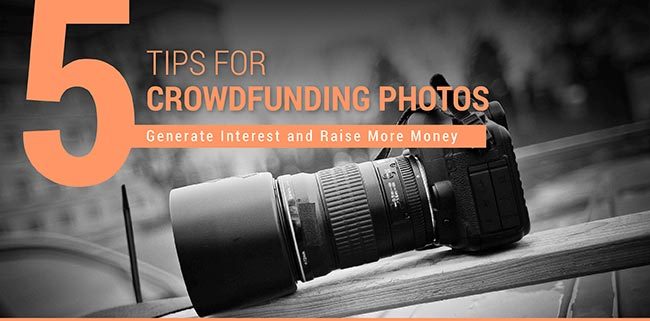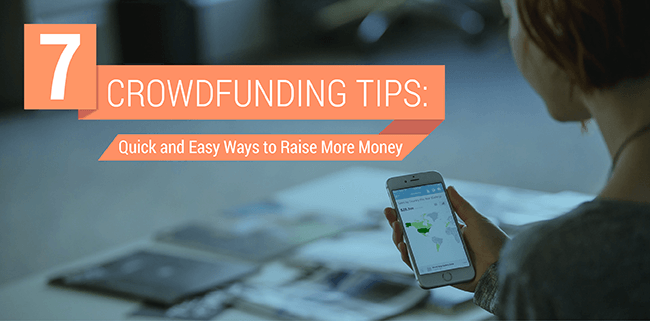4 Brilliant (and Useful) Donation Form Templates
by Kate WhiteSTART YOUR CROWDFUNDING CAMPAIGN: Put your donation form templates to good use by starting a fundraiser. Exceed your fundraising goals!
Fundraising through traditional mail is still an important way to receive donations. Although many supporters give via online channels, it’s still good to have a variety of giving channels.
Plus, traditional mail is more appropriate when asking for donations from major supporters or corporations.
When you send out donation request letters, your nonprofit should also include a donation form. That way, a supporter can fill out the form and submit it back to your nonprofit.
If your organization is looking for some direction on how to create a donation form, we’ve got you covered! In this article, we’ll cover four different types of online donation forms:
- Standard donation form
- Individual sponsorship form
- Charity auction donation form
- Volunteer time donation form
The four templates should function as an example of how you can create your donation forms. Feel free to tweak these templates to meet your organization’s specific needs.
1. Standard donation form
The standard donation form is the most general form we’ll go over. Your nonprofit can use it when requesting gifts from individual donors or corporations.
The template shown below includes all the basics of what you will need for your donation form.
Take a look at this example:
[At the top of the page include your nonprofit’s name, logo and a brief statement about your cause]
Personal Information
Donor name:
Address:
Phone number:
Email:
Gift Amount:
__$10
__$15
__$25
__$50
__$100
__Other:
or
__Monthly gift: [insert your recurring gift options here]
Payment Method
Please write your check or money order to [insert the name of your organization].
Enter in the following information if you’re using a credit card to make your donation.
Credit Card Number:
Expiration Date:
CVV (card verification value):
Card holder’s name:
Signature:
Thank you for your contribution.
As you can see, this donation form is short and to the point. The template includes all the necessary information. Your donation form may look different depending on your donation amounts or the types of payments you accept.
Let’s take a look at some of the main points that should be included in your donation form:
- Your nonprofit’s brand. Include your name and a few sentences about your cause on the donation form. The branding and background information on your organization reminds donors why they should give.
- Preset gift amounts. Instead of just having an empty donation amount for donors to fill out, give them preset amounts. Suggested donation amounts help speed up the donation process and often encourage donors to give more. Donors will think that everyone is using the buttons and infer that the suggested amounts are the right amounts to give. If you include donation amounts, have both high and low gifts so that every donor can choose the amount that works for them.
- A recurring gift option. If you accept recurring gifts, be sure to include it in your donation form. While donors who opt for recurring gifts tend to give smaller donations, over time, their donations add up to much more.
Use this template as a starting point for your donation forms. Your nonprofit can get creative and make this form unique to your needs.
2. Individual sponsorship donation form
The individual sponsorship donation form is very similar to the standard donation form, but it serves a different purpose.
Your nonprofit will use this donation form for fundraising events, like walkathons or peer-to-peer fundraising campaigns, where a supporter is seeking donations from their friends and family.
Here’s an example of an individual sponsorship donation form:
[At the top of the page include your nonprofit’s name, logo, a brief statement of your cause, and information on the event]
My contribution is supporting [leave blank for the donor to insert the participant’s name] in the [insert the walkathon, marathon, or other event].
Donation amount:
__$5
__$15
__$25
__$50
__$100
__Other:
Donor Information
Donor name:
Address:
Email:
Phone Number:
Payment Method
Please write your check or money order to [insert your organization’s name here]
Enter the following information if you’re donating with a credit card.
Credit card number:
Expiration date:
CVV:
Card holder’s name:
Signature:
Thank you for your contribution.
The template is very similar to the standard donation form. It still includes the preset donation amounts and the donor’s payment information.
What sets this donation form apart is the fact that you need to collect two supporters’ information.
Depending on the event, the first section might be different. Your nonprofit might require additional information on the sponsor.
Here are a few things to keep in mind as you create your sponsorship donation forms:
- Make sure there is a clear distinction between the participant’s and the donor’s information. That way, the donor can easily understand what information is required to complete the form. Plus, a clear form will save you time trying to get the right information if the form is filled out incorrectly.
- Keep the preset donation amounts but take out the option for recurring giving. A recurring gift option just doesn’t make sense for this type of form. A donor is giving to support a loved one in a single event.
- Include information about the event and your organization at the top. Since these donors are giving to your nonprofit based on recommendations, make sure they know what cause and organization they’re supporting.
When your nonprofit creates a form for sponsorship events, remember that it’s important to be clear and make sure the form isn’t complicated to fill out.
3. Charity auction donation form
If your nonprofit hosts auctions, then you know that the items up for bid are usually contributed by generous donors. An auction donation form helps your nonprofit keep track of the items you receive.
Your nonprofit can send out this donation form to individual supporters or to local companies that can supply you items for your auction.
Let’s take a look at the example.
[At the top of the page include your nonprofit’s name, logo, and a brief statement of your cause or description of the auction.]
Personal Information
Donor/business name:
Address:
Phone number:
Email:
The Gift(s) In-Kind.
Please list out the item(s) you donated and provide a brief description of each item.
Please provide an approximate retail value of the items you donated:
Thank you for your contribution.
When your nonprofit creates auction donation forms, here are a few things you should keep in mind:
- Let your supporters know what the donation is for. Give your supports some context about how their donations are going to be used. If donors know what impact their donation can make, they’ll be more motivated to give.
- Include a place to list out the gift(s) in-kind. You’ll need to know what items each donor gave to prepare proper receipts and thoughtful acknowledgments.
- Even though they aren’t making a monetary donation, you still need to collect your donors personal details. Information like their phone number and email are still crucial so that you can send donors a receipt. Also, you can use their content information to follow up and ask for donations in the future.
The charity auction form is a short and simple way to keep track of the items donated to your auction, so you can properly acknowledge and follow up in the future.
4. Volunteer time donation form
Some of your donors will want to give their time as a donation. With a volunteer donation form, your nonprofit can request volunteer time as well as gather additional information on your volunteers.
You can include this form along with a standard donation form to give your donors more ways to supporter your organization.
Here’s an example of a volunteer donation form:
Volunteer Donation Form [insert your organization’s name, a short statement about your mission, and a description of the volunteer position]
Contact Information
Name:
Address:
Phone Number:
Email:
Availability
How many hours would you like to volunteer a week?
__1 hour
__2-5 hours
__6-10 hours
__11-20 hours
What days are you available to volunteer?
__Monday
__Tuesday
__Wednesday
__Thursday
__Friday
__Saturday
__Sunday
Volunteer interests and skills.
Please check all the positions that interest you.
__Taking pictures of events
__Handing out fliers
__Setting up for events
__Other
Please list any previous volunteer work, hobbies, or other skills that you have that might be useful when volunteering with us.
Even though your volunteer form doesn’t require any payment information you still need to collect information on your supporter’s availability and contact information.
With the volunteer donation form, the most important information to collect is the supporter’s availability. While this form doesn’t require any payment information, you nonprofit still needs to get a good idea of the supporter’s volunteering plans and how they can be contacted.
Consider these three things when creating your volunteer donation form:
- Don’t just ask when a donor is available. It’s also important to know how many hours you can expect them to volunteer every week.
- Include a place where donors can talk about their skills or interests. Your nonprofit can assign volunteers a task that makes use of the skills they already have.
- Include a brief statement about your mission and an overview of the position. That way, volunteers get an idea of the kind of work they might be doing.
Even though volunteers aren’t donating money, it’s still important for them to fill out a form so that you know how they plan on volunteering. Once you know how much time they want to give and what positions they’re interested in, you can place your volunteers in the right position.
Hopefully, these donation form templates help you create better donation forms. That way, your nonprofit can reach your fundraising goals. If you need a few ideas for putting these donation forms to use, learn more with these great fundraising ideas.











